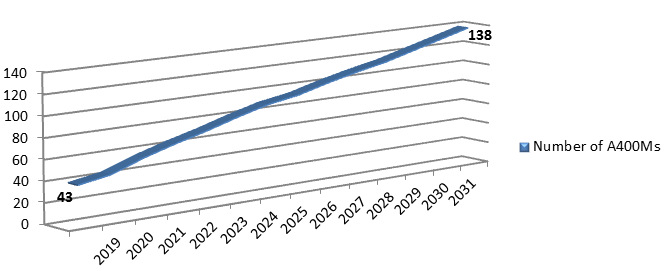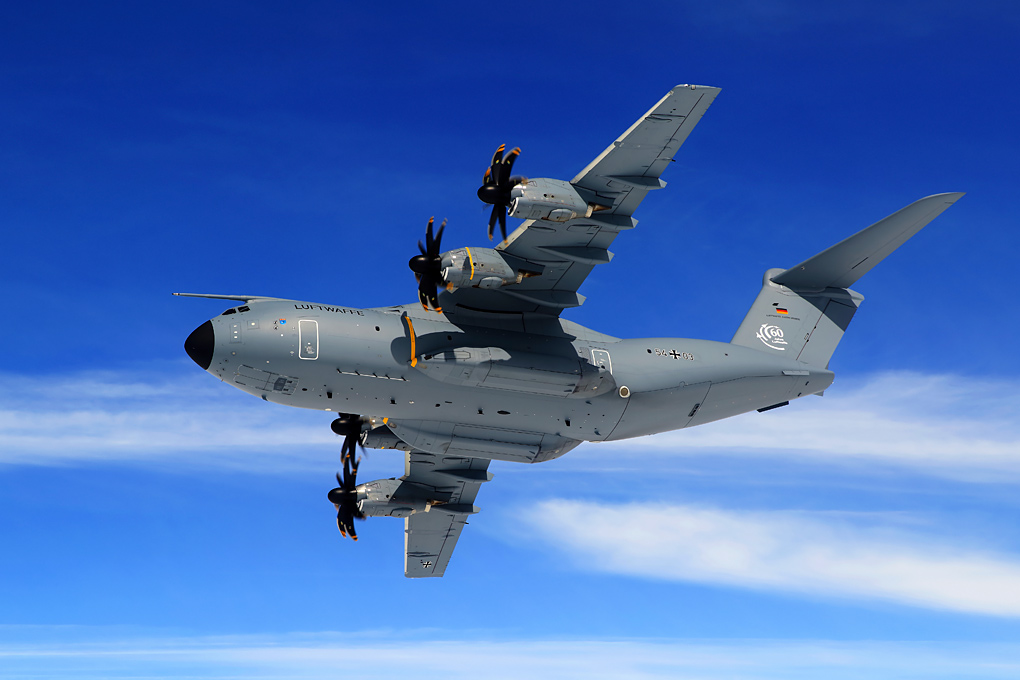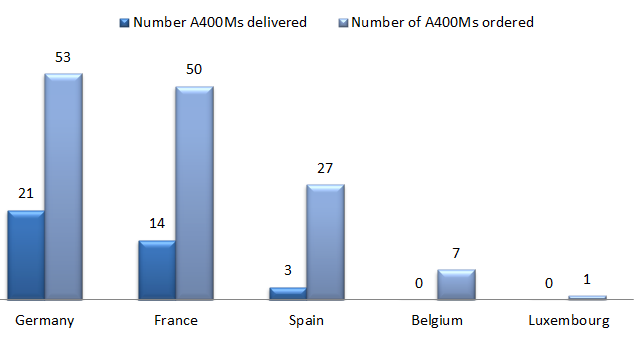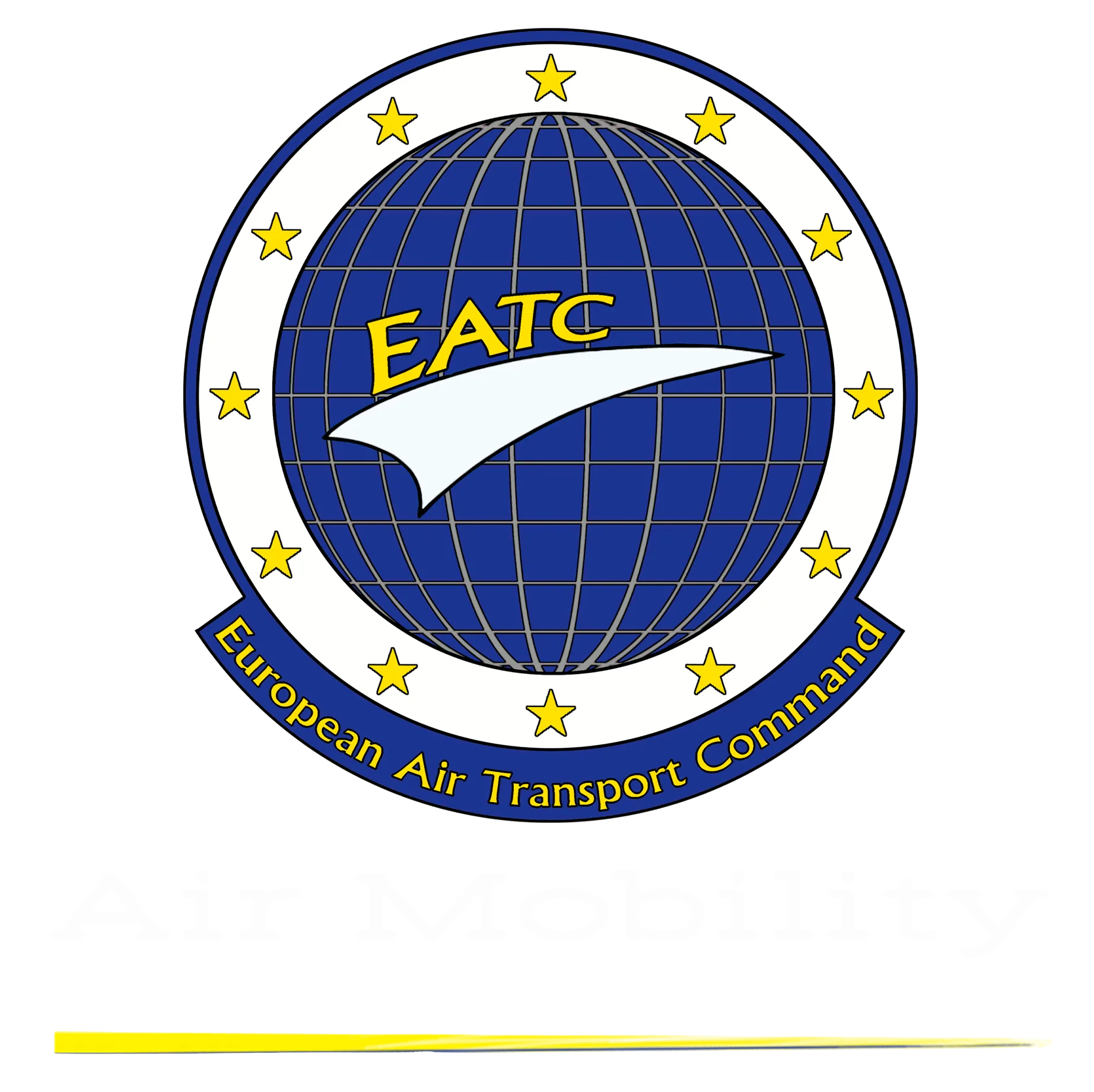30.11.2018
At the end of 2018, EATC’s multinational fleet comprises 43 A400M aircraft. Ultimately EATC will command and control up to 138 A400M aircraft from Belgium, France, Germany, Luxembourg and Spain. The enrichment of the A400M, but also the introduction of the A330 MRTTs and the arrival of the new C-130Js, will enhance the capacities and the capabilities of EATC’s diverse multinational fleet.
From the start, EATC has played a key role with the employment of the A400M and the ramp-up of the fleet. Even if the first delivery schedule has not been respected by industry and the 138 aircraft are delayed to 2030, the A400M is ...

… EATC’s lighthouse project!
We accepted the challenge on the first day we were created in 2010. The “A400M Development and Production Phase contract” signed in 2003 was the baseline to start coordination between the A400M nations. EATC took the lead to optimise the utilisation of the fleet, to ensure a future common use of the aircraft and to increase effectiveness. With the delivery of the A400M to our member nations, starting in 2013, EATC has of course focused extensively on the operational use of the new fleet.
Today EATC can pride itself of A400M key documents, developed in close cooperation with its member nations. These documents take into account the national requirements, while focusing on harmonisation and standardisation, thus aiming at interoperability among the A400M user nations.
Many concepts and manuals are still under development, here only a few of our main key documents :
1. A400M ATLAS Common Concept
The concept was published in 2013. It emphasizes the need for interoperability and, thanks to a synergistic effort, guides A400M nations in their pursuit of cost savings. The concept anticipates, that the A400M, as a collaborative European project, will bring inherent interoperability advantages to EATC member nations.
2. A400M ATLAS Common Doctrine
This doctrine, published in 2016, defines EATC’s daily work in the functional domain. It refines the framework set by the concept (see 1.) and establishes harmonised procedures to operate the A400M. The doctrine assesses that interoperability and operational efficiency are achieved through multinational cooperation, standardisation and harmonisation of procedures. Interoperability is set in the following five main fields: command & control, communication & information systems, operations, logistics and training.
kkkkkkkkkkkkkkkkkkkkkkkkkkkkkkkkkkkkkkkkkkkkkkkkkkkkkkkkkkkk

3. A400M Standardisation Framework
This document was approved in 2017 and sets the frame for future work in the A400M domain. It addresses the whole “ A400M Operational User Group” and thus not only EATC member nations. The framework aims to provide in-depth details for future cooperation in four development lines: standardisation of documentation, harmonisation of mission preparation & planning, sharing of databases & information and harmonisation of engineering practices.
4. EATC studies and manuals
The A400M was a major factor for a detailed EATC operations manual (OM). Today, for example, the OM’s subpart related to training standards is closely linked to the introduction of the A400M and to the will to have aircrew (pilots and loadmasters) trained along same standards. Read more on EATC’s operations manual here (link to newsletter article).

Today EATC’s A400M fleet capacity in terms of cargo and passengers is still insufficient for all needs of transportation requests. The delivery of new aircraft to Germany, France and Spain however enlarges constantly the capacity.
The large cargo bay of the A400M allows increasing the size of air transportable freight. It will be capable of airlifting modern armed forces equipment and offload it on remote airfields.
The A400M is a collaborative European project!
EATC intends at any moment to reinforce cooperation in the areas of common interest with partners and to target a common goal of interoperability across the lines of development throughout the lifecycle of the aircraft. In this respect EATC signed a number of cooperation agreements with partners :
1. A400M Interoperability Framework
This document was signed in 2013 between the EATC A400M nations and the United Kingdom. These nations agreed that the A400M is developed, managed and operated with interoperability at its core.
2. A400M Vision Paper
This document was signed between EATC and OCCAR-EA* in 2016. It develops fictitious future international crisis scenarios and how the A400M user nations could utilize this airlift capability. Moreover the vision displays how benefits can be achieved and difficulties overcome.
3. Letter of intent EATC, EDA and OCCAR-EA
This agreement was signed in 2018 and concerns the joint optimisation and development of the A400M capability within the remit of EATC. This signature confirms the three organisations’ willingness to enhance synergies and avoid duplication of efforts. They will also explore possibilities to efficiently utilise future air transport capacities and will jointly facilitate the optimisation and development of the A400M capability.
*Organisation for Joint Armament Cooperation - Executive Administration
And the future …
… will strengthen EATC’s central role in the ramp-up of the A400M fleet. On the one hand today we already exert operational control over 38 aircraft. We plan, task, control and report A400M missions on behalf of our nations. On the other hand, EATC has the full mandate from its member nations to establish an interoperable common way forward.
The challenge is taken up. EATC will strive on achieving a most cost effective use of the A400M aircraft, together with partner organisations and enable successful multinational operation of this aircraft.
